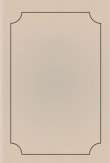قراءة كتاب Report on Surgery to the Santa Clara County Medical Society
تنويه: تعرض هنا نبذة من اول ١٠ صفحات فقط من الكتاب الالكتروني، لقراءة الكتاب كاملا اضغط على الزر “اشتر الآن"
visit the pulse was 74, and temperature 99. This was at about 9 a.m. I visited him again about 5 p.m., and found the pulse and temperature the same. There was by this time considerable increase in the quantity of fluid. I re-adjusted my compresses and bandaged again. On Saturday morning I found the quantity of fluid about the same, perhaps slightly increased. There was now considerable inflammation of the integument, over a large part of the sinus, the skin appearing tense, and the small blood vessels distinct and purple. The patient had a slight chill last night, pulse 100, temp. 102; did not remove the compresses.
Saturday evening, Feb. 7th, condition worse, pulse 112, temp. 103, tongue furred ash-colored, countenance typhoid in expression, loss of appetite, no abdominal symptoms, mind clear. Sunday, Feb 8th. pulse 120, temp. 105.4, tongue same as yesterday, had a chill last night. The skin over the sinus is inflamed somewhat more than it was yesterday. With the advice and assistance of doctors Brown, Thorne, Benj. Cory and Kelly, sixty-eight ounces of blood was removed from the sinus, by aspiration. One hour after this operation, the pulse was 140 and the temp. 104. The specific gravity of the blood removed was 1030, and after standing for two or three hours, a grey or ash-colored sediment settled, the proportion of this being about 20 per cent. of the whole amount of the blood. This sediment consisted of corpuscles that seemed to be undergoing decomposition; they were a little larger than the red corpuscles; contained granules or spots, from three to four and seven and eight in each corpuscle. Some of them seemed to be simply swollen red blood corpuscles, ready to burst, or as it were, suppurate. If there be such a thing as inflammation of the blood,—and I believe there is,—then this change must effect the red corpuscles themselves, as to size, temperature and perhaps pain, thus supplying three of the well known characteristics of inflammation, expressed so tersely by the old latin formula, rubor, tumor, calor cum dolore. Owing to the color of the blood, the rubor, or redness, is not produced by inflammation here as it already exists.
But to return to the patient. After the blood was withdrawn, compresses were carefully applied, and the body bandaged from the lower ribs as low down as the bandage could be applied with the legs flexed at right angles to the body. The patient stood on all fours, as it is called, while the bandage was applied.
Monday, Feb. 9th, 9:30 a.m., pulse 100, temp. 103.8. There appeared to be about one-half a pint of fluid in the sack. Monday, Feb. 9th, 6:30 p.m., pulse 100, temp. 102. Tuesday, Feb. 10th, 9:30 a.m.,—the fluid in the sack has increased—perhaps a pint now in it, pulse 110, temp. 104. Wednesday, Feb 11th, 9:30 a.m.,—pulse 90, temp. not taken. Condition good. Ordered a laxative.
Friday, Feb 13th,—considerable inflammation over the left iliac crest, in the centre of which, a spot as large as the thumb nail, looks gangrenous. The inflammation extends over a surface as large as the two hands. Some bullae or blebs have formed in the vicinity of the gangrenous spot. Ordered a large flaxseed poultice applied, expecting an abscess would form at this place. The cathartic moved the bowels two or three times. I will here state that the patient, after the withdrawal of the blood on Sunday, was ordered iron, quinine and whisky; twenty minims of Tr. Ferri Muriat., three grs quinia, in a tablespoonful of glycerine and a little whisky. I afterward had the quinia made into pill and left off the iron, as the latter seemed to disagree with the stomach.
Saturday, Feb. 14th, 5 p.m.,—pulse 112, temp. 102.4. The inflammation over the left ilium is much better; but there is now as much



